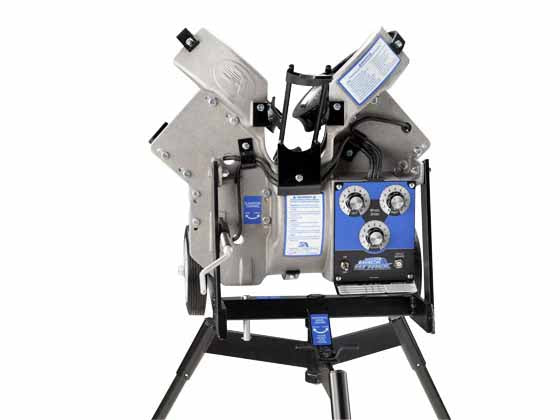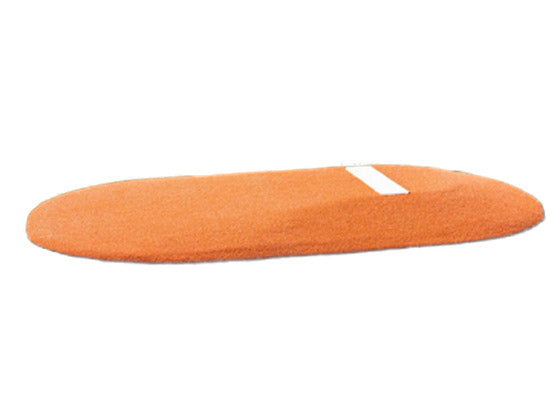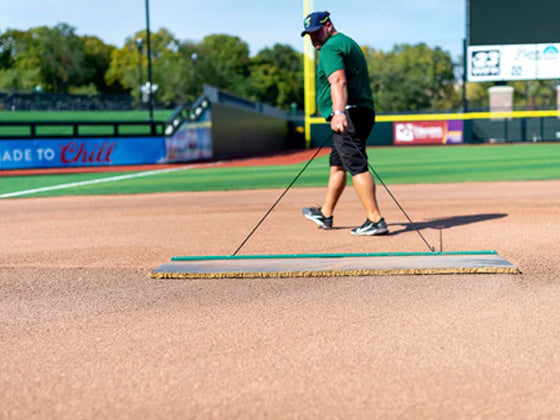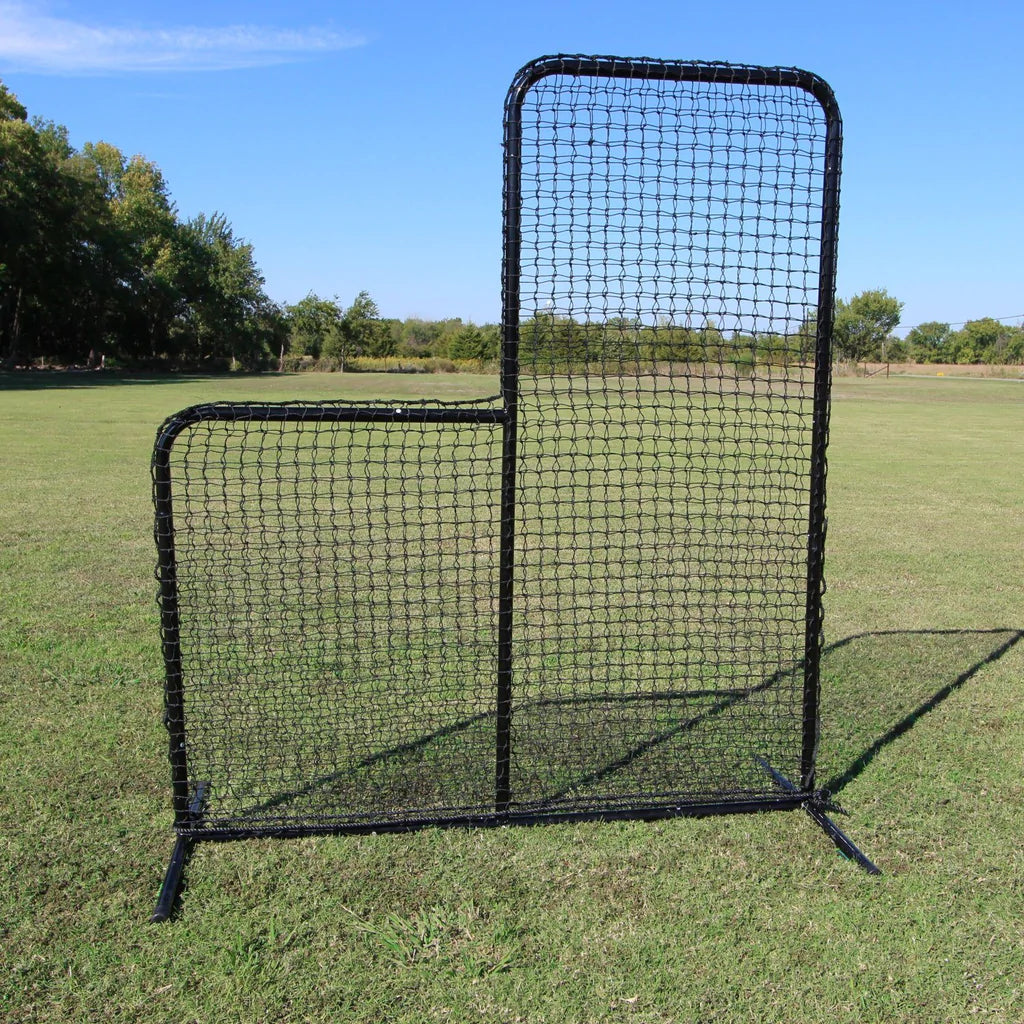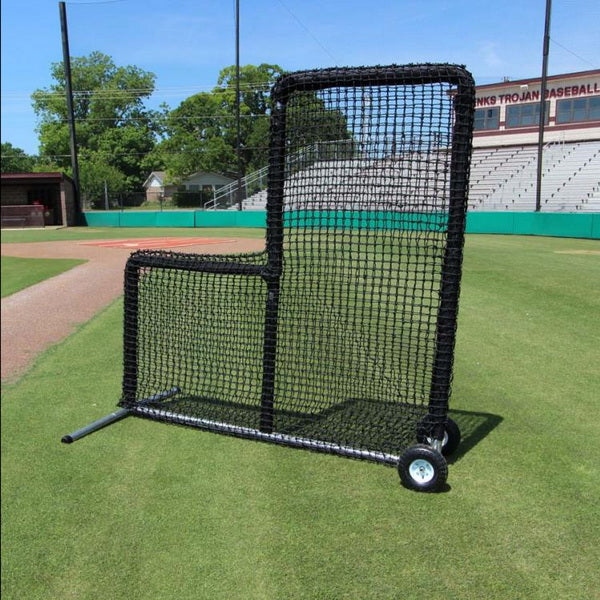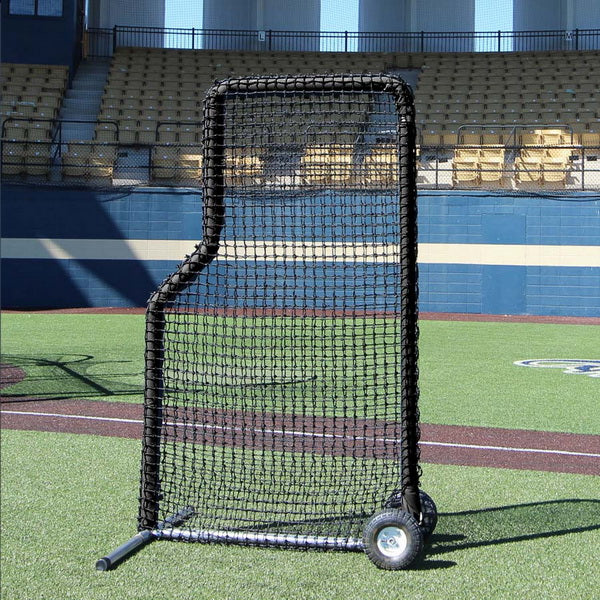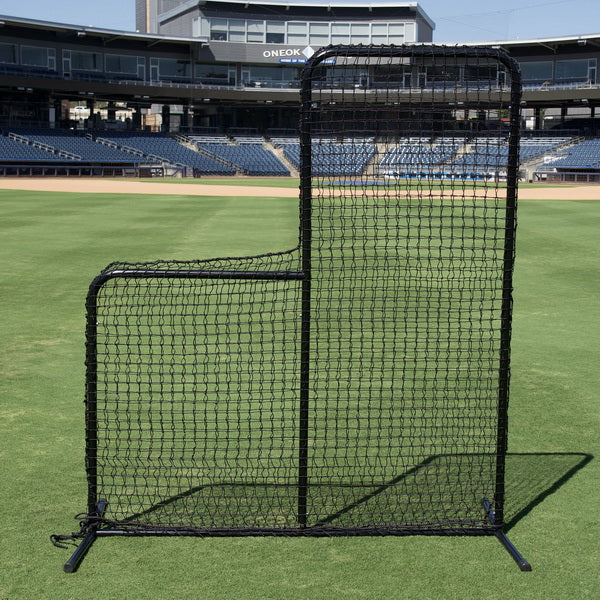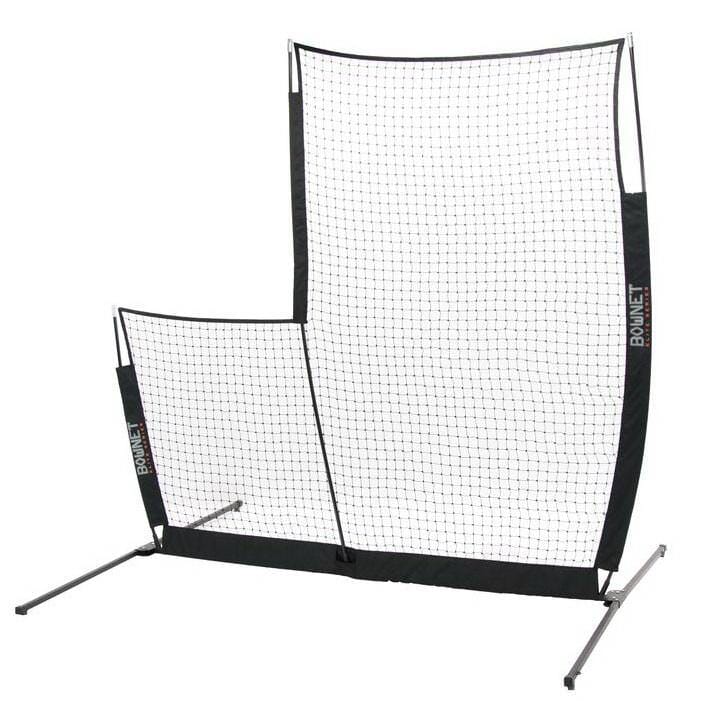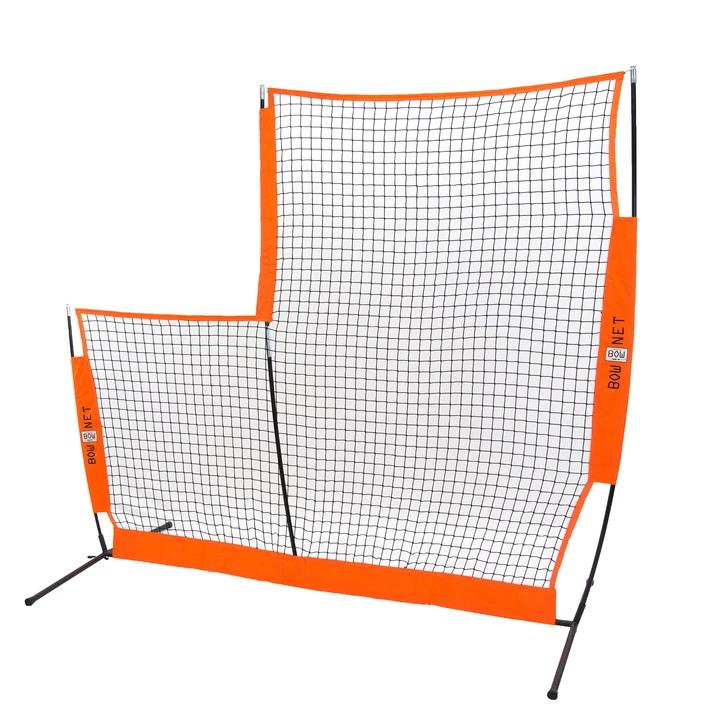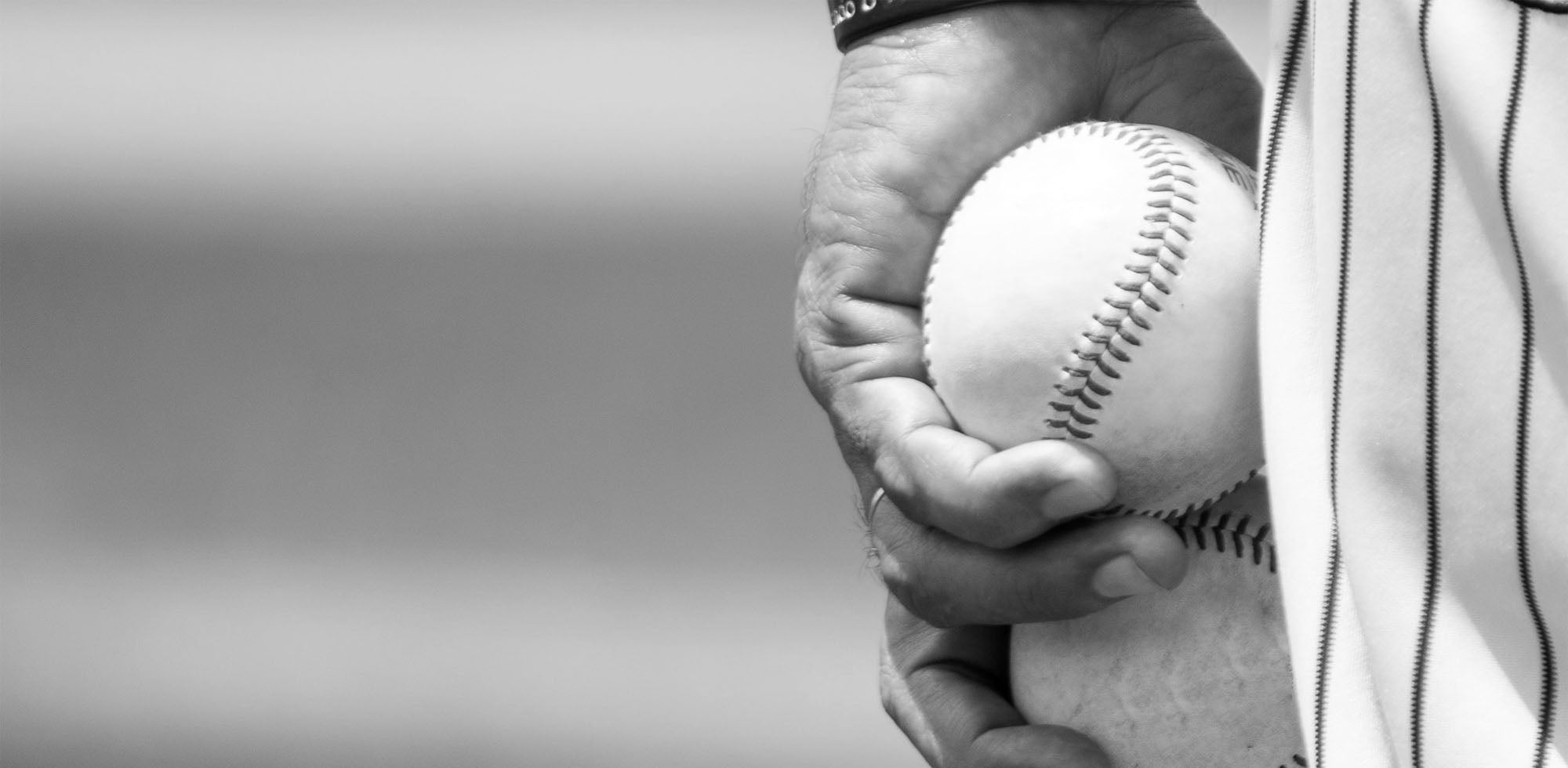Baseball L-Screens for Sale
You’ve seen them in batting practices and the Home Run Derbies, but they’re not just for the big leagues. A baseball L screen is a protective net that protects players and coaches from hard-hit baseballs during batting practice and pitching practice.
Providing your players with top-tier safety is crucial, and a pitching L-Screen net will protect both your players and coaches during your next batting practice.
Our line of pitcher's l-screens can be used indoors and outdoors and are vital equipment for improving batting, pitching, and overall safety.
Since L screens may take a beating from line drives during batting practice, it is important to invest in a high-quality L Screen that will hold up over time. So, we will help you decide what L Screen is best for your baseball training needs.

Which L-Screen Should I Buy?
With so many L-screens on the market, it can be hard to pick the right one. How much use it will get, what level of players will be using it, and your budget will all determine which baseball l-screen is right for you.
On the low end, we have Bownet L-Screens. These l-screens are great for youth players in youth leagues up to high school. Typically, these work great for parents wanting to throw BP to their kids, or for Little League team practice. These screens are made with quality netting material and fiberglass poles (while others are made with steel), making them a durable and portable option. Our favorite and best seller is the Bownet Pro L-Screen because it comes with a carrying bag and only takes 2 minutes to set up.
But, for just a few bucks more, you can get yourself a solid steel l screen. We carry multiple high-quality L-screens, each varying in durability of steel and netting, with options for padding and wheels. Take a look at the table below to see some of the best available L-screens on the market today.
Recommended L-Screens
| Image | L-Screen |
Best L-Screen for: |
|---|---|---|
| Bullet L-Screen for Baseball 7' x 7' | Best Padded L Screen | |
| Bullet L-Screen for Baseball 7' x 7' with Wheels | Best Portable L-Screen | |
 |
Residential Baseball L-Screen |
Best Value |
 |
Bownet L-Screen Pro Portable Protective Net |
Most Affordable |

Portable L-Screens
For players, parents, and coaches looking to make safety more convenient, you need a portable l screen.
Coaches and parents really like this portable 7' x 7' L screen. It's made with 1 5/8" steel, #60 pillow style netting, and comes in over 10 different colors. Its inflatable wheels make it a breeze to bring on and off the field for batting practice.
Padded L-Screens
If you're looking for something safer, you should look into our L-screens with padding. A layer of padding around the steel frame reduces the risk of ricochets and increases the life span of the screen. The safest and most padded screen we carry is the Premier 7' x 7' L-screen; It features 13-gauge steel, #84 pillow-case netting, and robust padding for maximum safety.
This covers everything you need to know about L-screens! For more information, check out our blog post about the best l screens for this upcoming season. Or, give us a call at (888) 466-0009 for more help!

 Contact Us
Contact Us